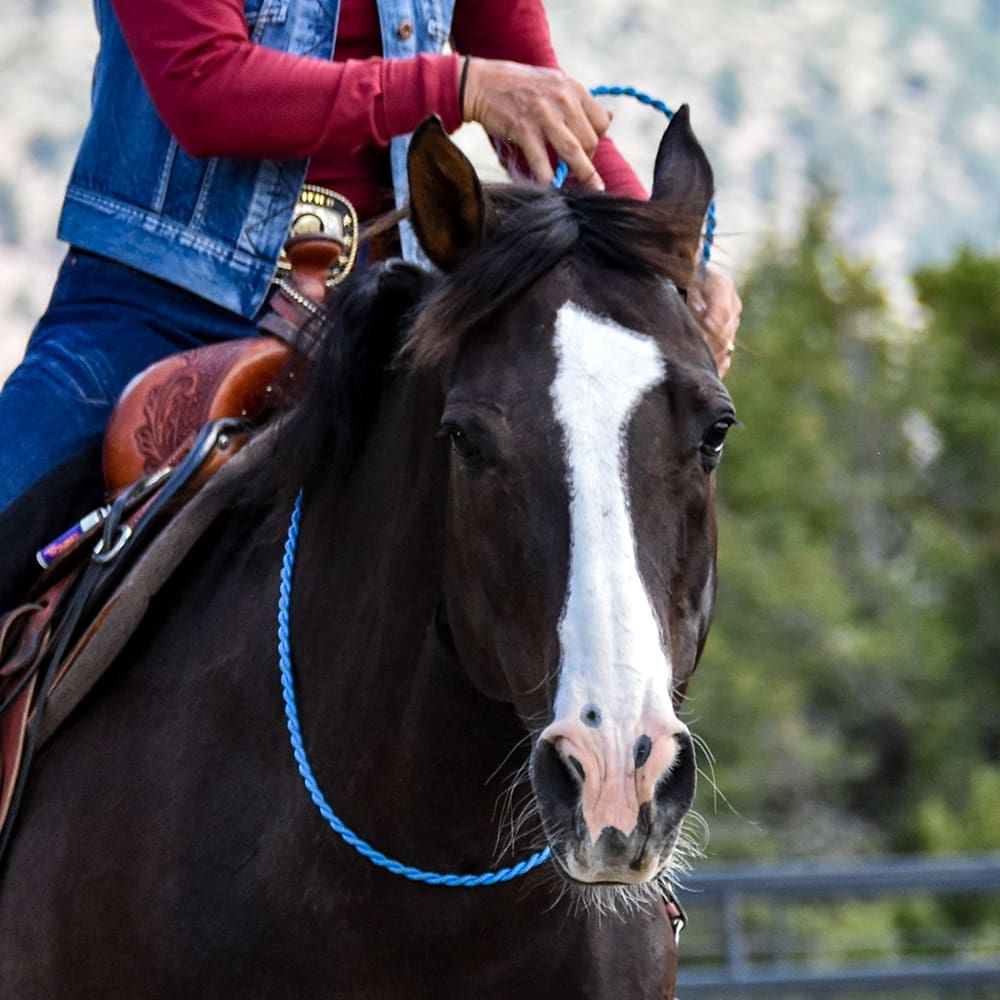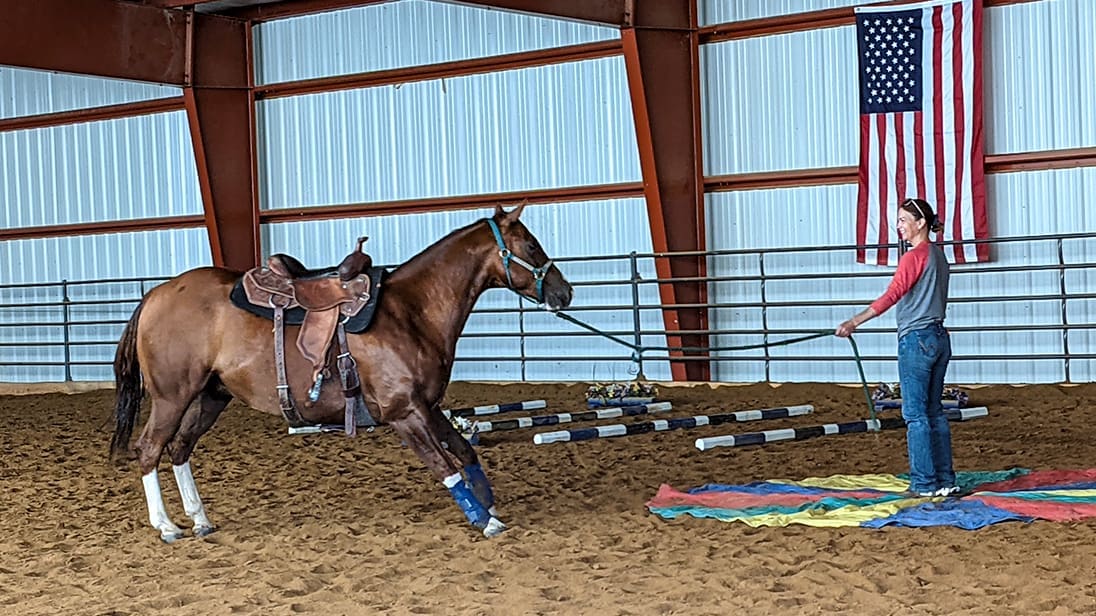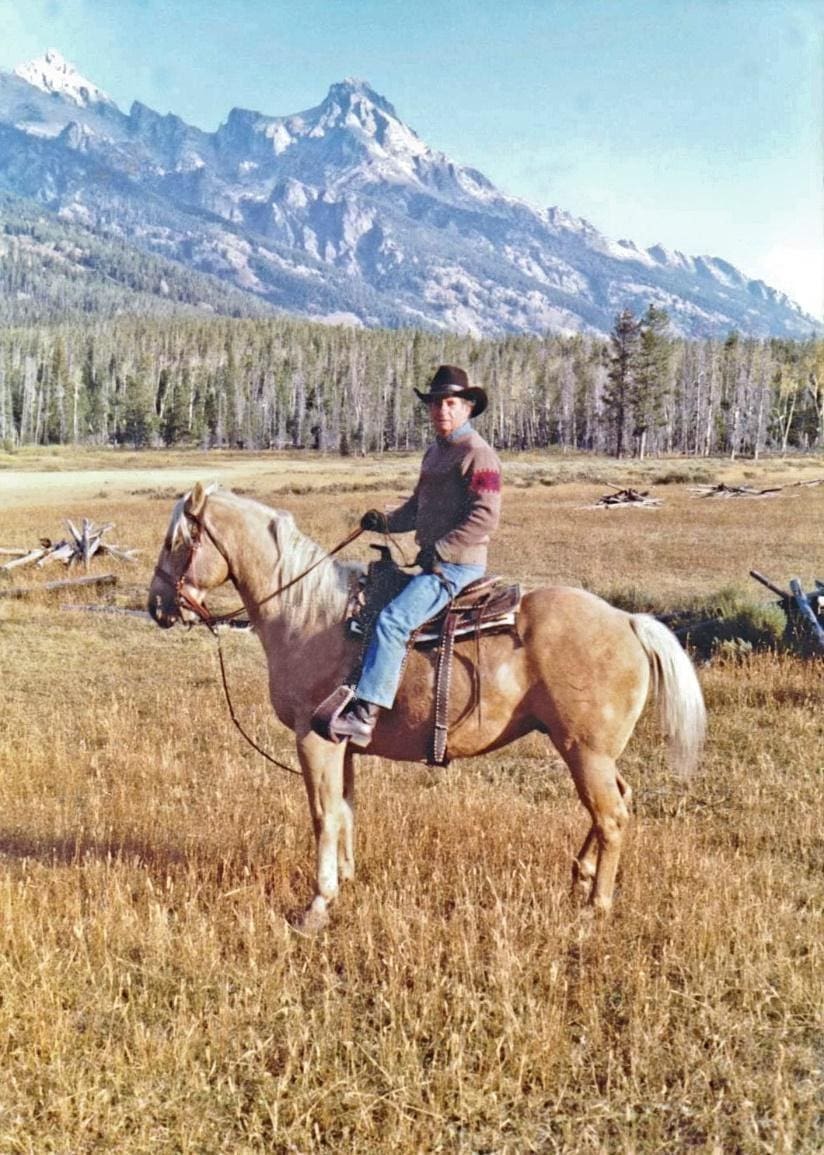What To Do With a Horse Afraid of His Rider
Question: Hello Julie, I have a 4 year old registered paint gelding, Zippo Pine Bar bred, tall and gorgeous that I have had for just over a year! But, he is terrified when I step near or into the saddle. I bought him knowing he had a troubled past, but I can’t seem to make any new progress with mounting. I have done a ton of groundwork and desensitizing which he does great with.
The problem comes in when I am on the mounting block. His body gets very tense, his lower lip will quiver with concern and his eyes look terrified. I usually stand on the mounting block doing stretching exercises and touching/patting him all over until he relaxes, which sometimes doesn’t happen! If I get on without using my stirrup he is OK, still nervous but stands fine. However, if I even start to put weight in my stirrup he will bolt away from me, and once that has happened I will not be able to mount that day (he gets way too freaked out).
Strangely enough though, once I am on you would never know he is such a challenge to get on. He rides like a dream, still green, but a wonderful 4 yr old! I have all the time and patience in the world for this horse, he truly is an amazing animal that was damaged by an uncaring human by no fault of his own. I just want some direction on where to go with him!
Thank you so much!
Nichole
Answer: Nichole, Sounds like your horse was lucky to find you! It is not hard to make drastic mistakes in the process of starting a horse under saddle. There are many steps at which things can go very wrong and there are many stupid mistakes to be made by people in the complicated process of training a young horse to be ridden.
Who knows what happened with your horse in the past, but chances are it was entirely preventable. That’s why I always encourage people to hire a professional to put a good foundation on your young horse—it is a time that can make or break a horse’s riding career. In your case, it seems like his previous training left him broken, but not broke.
During the process of introducing a horse to the saddle, to mounting, to balancing the weight of the rider, to taking cues from the rider, there are many crucial steps that, done wrong, can turn into a very negative training experience for the horse which may cause problems for the rest of his life. Something went wrong with your horse—either something hurt him physically like an ill-fitted saddle or something scared him so badly that his reaction caused him to get hurt (a self-fulfilling prophecy to the horse).
So now you are left to undo the damage that was caused when the horse was “broke.” Good training and many, many repetitions (until the good experience far outweighs the bad) will fix this horse. The good news is that he is young and still impressionable. It’s really good news that he is working well under-saddle—it tells me if you find the right technique, he will be entirely fixable.
It’s critical to make sure your saddle and/or poor mounting technique is not causing the problem. If it is digging into his wither or shoulder when you mount, he has good reason to react poorly. Unfortunately, the fear of pain may have originated from his previous training so even if your saddle is not currently causing a problem, in his mind, he may think mounting will always hurt him.
After you’ve ruled out a physical problem, only time and patience will reprogram your horse. You need to retrain the mounting process as if you were starting from the beginning, only it will take much longer. It always takes much longer to undo training mistakes than it does to train a horse right to begin with. Wouldn’t it be nice to know about all the potential mistakes you could make in training a horse before you actually do it?
We have four new episodes of Horse Master coming out in February 2012 about starting a young horse under-saddle—each step you take, how to do it right and what mistakes to avoid. This same info is also available in my full-length training DVD, Ready to Ride. One whole section is on mounting and I would use the same process on your horse. It is my hope that this information will help people avoid making the mistakes that were made with your horse.
Based on the info stated in your question, the first thing I would do is get rid of the mounting block. It is possible that it is contributing to his fear and I would want to see what his reaction to mounting was without it. I’ve seen a lot of training problems that involve a mounting block.
Of course, this means you have to be very good at mounting from the ground and getting your weight centered over the horse’s back as soon as possible, so as not to hurt his back. I have also seen many mounting issues caused by poor mounting technique on the part of the rider.
Next, you’ll break down the mounting process into tiny steps and then use a process known as pattern conditioning, where you repeat a certain pattern over and over until the horse has a conditioned response that is relaxed and accepting. Your horse already has a conditioned response to being mounted, but it is not a good one. Breaking it into small steps, releasing the pressure on the horse when he responds correctly and repeating this pattern again and again, will fix your horse.
There are a lot of articles in my Training Library, http://juliegoodnight.com/q&a.php, on desensitization and dealing with fearful behavior. You may want to read some of them—even if the articles are not exactly the same as your horse, you will likely find some info that helps. It is important that you fully understand the process of advance and retreat desensitizing and when you give the release.
Also, be sure to tune in to Horse Master on RFD-TV in February to see the episode on first mounting. If you don’t get RFD, you may want to order the DVD, Ready to Ride. It is the fourth DVD in my “From the Ground Up” series and covers the very critical stage in a young horse’s training when you first begin riding him. BTW- the previous three videos in the series are pre-requisite to this stage and cover round pen work, lead line work and training the horse to respond properly to bit pressure.
Take your time, have lots of patience and you will get past this problem with your horse. He sounds like a good egg—he just needs some reprogramming.
Enjoy the ride!
Julie



